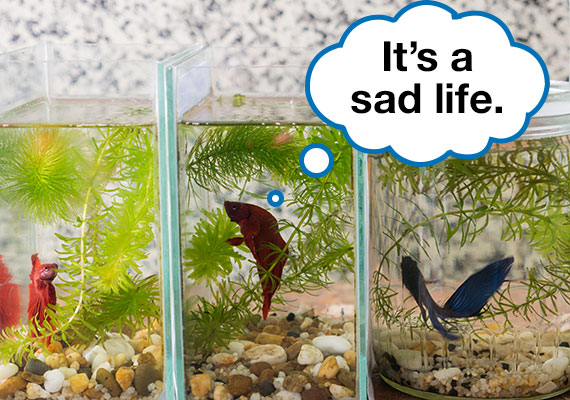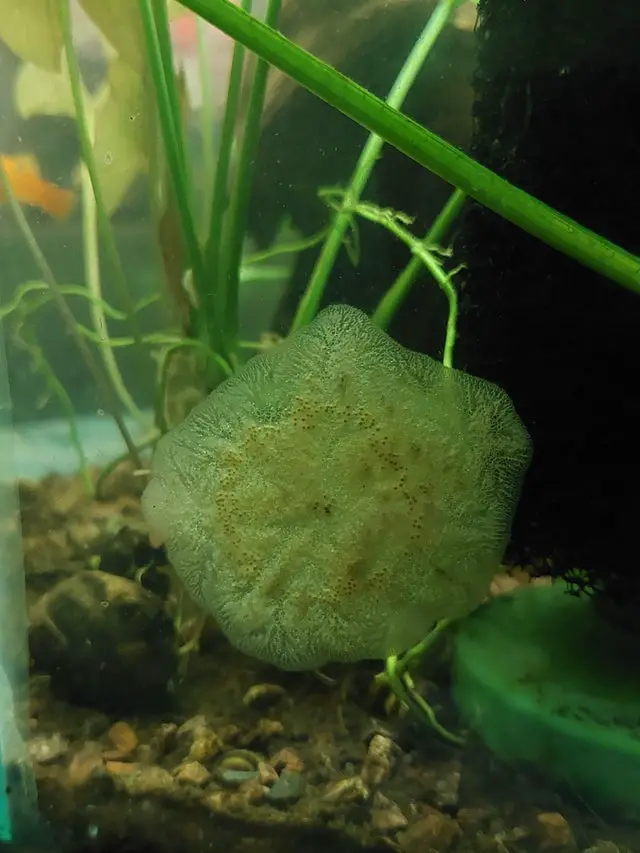Rust Colored Algae in Fish Tank
Rust colored algae is a type of brown algae that usually forms in fish tanks. It can form on the surface of rocks, plants, and other surfaces in an aquarium.
And will often attach itself to decorations or the glass walls of the tank.
Rust colored algae is caused by too much light, nutrients, and organic matter in the tank.
As well as inadequate water circulation which allows for stagnation.
To prevent rust colored algae from forming it’s important to maintain good water quality through regular water changes and filtration to remove excess waste materials.
Reducing lighting levels within your aquarium can help reduce growth of this type of algae.
As well as adding fast-growing live plants which will compete with rust colored algae for resources.
Finally introducing some species such as Siamese Algae Eaters or Otocinclus Catfish.
May also help keep these types of nuisance algaes under control but be sure not to overstock your tank!
Rust colored algae can be a common problem in fish tanks, but it doesn’t have to spell disaster for your tank.
If you act quickly and take the right steps, you’ll be able to keep your tank looking its best.
To start, make sure you’re regularly cleaning out the filter and performing water changes.
Try to get rid of any extra food or debris that’s been left behind by feeding too much.
Lastly, increase aeration within the tank so that there is plenty of oxygen available for beneficial bacteria which will help reduce the amount of rust colored algae growth.

Credit: badmanstropicalfish.com
How Do I Get Rid of Rust Colored Algae in My Fish Tank?
If you’re noticing rust colored algae growing in your fish tank, it’s important to take steps to get rid of it as soon as possible.
The first step is to do a water change and vacuum the substrate of the tank.
This will help remove excess organic matter that may be contributing to the growth of the algae.
Make sure that you are not overfeeding your fish or leaving food particles in the tank for too long which can also contribute to algal blooms.
You should also check your filter and make sure it is functioning properly, as this helps keep nitrate levels low which can reduce algal growth.
Finally, if these steps fail then you may need an algaecide such as hydrogen peroxide or copper sulfate solution to kill off any remaining algae.
Be sure to follow directions carefully when using these products and always perform regular water changes afterwards!
Does Brown Algae Hurt Fish?
Brown algae, or diatoms as they are sometimes called, can be a nuisance to fish owners.
While their presence in an aquarium is not necessarily harmful to the fish, it can cause problems if left unchecked.
Brown algae often grows on hard surfaces like rocks and gravel, where it takes up valuable space for other plants and organisms.
It also tends to block out light from reaching the lower levels of the tank which makes it difficult for photosynthetic organisms such as plants to survive.
Fish may suffer poor water quality due to lack of oxygen exchange caused by the thick layer of brown algae covering everything in sight.
Is Brown Algae in Fish Tank Harmful to Humans?
When it comes to fish tanks, brown algae can be a common problem.
While some types of algae are beneficial and even desirable in a tank, brown algae can quickly take over if not monitored.
Fortunately, the good news is that while brown algae may detract from the aesthetic appeal of your tank, it’s generally harmless to humans.
Brown algae is usually caused by an excess of nutrients like nitrates or phosphates in the water.
To prevent this type of algae growth in your aquarium, regular water changes and maintaining proper parameters such as pH levels should be done on a regular basis.
Make sure you’re not overfeeding your fish or providing too much light; both factors can contribute to rapid algal growth.
If you find yourself with an outbreak of brown algae despite these precautions there are several treatments available depending on how severe the problem has become.
Algae-eating fish such as Siamese Algae Eaters and Otocinclus Catfish are great natural solutions.
For controlling small amounts of infestation without harming other species in the tank or introducing chemicals into the environment.
For more serious cases though chemical algaecides may be necessary.
However, it’s important to use them carefully according to manufacturer instructions so that they don’t harm other creatures living in your tank including invertebrates and corals.
While nobody wants their aquarium overrun with unsightly brown patches – rest assured that this type of nuisance isn’t hazardous for human health!
Hydrogen Peroxide in Fish Tank Brown Algae
Hydrogen peroxide can be used to help keep brown algae away from your fish tank.
When added to the water, it breaks down oxygen molecules and disrupts the algae’s photosynthesis process, thus preventing it from growing.
However, be sure to use only very small amounts of hydrogen peroxide in order not to harm any beneficial bacteria or other organisms living in the aquarium that rely on oxygen for their survival.
Brown Algae Eaters Freshwater
Freshwater Brown Algae Eaters are a great addition to any aquarium, as they help keep your tank clean by consuming algae and other debris.
These fish typically have an elongated body with a wide mouth and two barbels on the lower jaw.
They come in many different colors and sizes, making them easy to find one that will suit your needs.
Freshwater Brown Algae Eaters can be found in tropical tanks or cold water tanks depending on their species, but all of them prefer waters with high oxygen levels and plenty of hiding places.
Brown Algae in Fish Tank
Brown algae, also known as diatoms, is a type of single-celled algae commonly found in fish tanks.
It often appears as a light brown or golden scum on the glass and rocks of your aquarium.
While it’s not necessarily harmful to your fish tank, it does tend to take away from its aesthetic appeal.
Brown algae can be managed by keeping the water parameters within normal ranges and reducing nitrates, phosphates and silicates.
Increasing circulation and maintaining regular water changes can help reduce brown algae growth in your tank.
How to Stop Brown Algae in Fish Tank?
The best way to stop brown algae from growing in your fish tank is to make sure that you are doing regular water changes.
Using a gravel vacuum, and reducing the amount of light that your aquarium receives.
Adding snails or other algae eating creatures can help keep the growth of brown algae under control.
Finally, be sure to feed your fish only as much food as they can consume within two minutes; this will ensure there aren’t any excess nutrients available for the algae to feed on.
Brown Algae in Fish Tank Good Or Bad!
Brown algae can be both good and bad for a fish tank. On one hand, it provides nutrients to the water that may help other plants grow.
On the other hand, too much brown algae can create an oxygen-poor environment in your aquarium which is bad for your fish.
It’s important to understand how much is appropriate for your particular tank before introducing any additional brown algae into the environment.
Brown Algae on Aquarium Glass
Brown algae, also known as diatoms, is a type of greenish-brown slime that can form on the glass of aquariums.
Brown algae will typically appear due to an imbalance in light and nutrient levels.
Proper maintenance such as frequent water changes and avoiding overfeeding your fish can help prevent brown algae from forming.
Reducing the lighting schedule or using an LED light with a timer may also help reduce its appearance.
What Causes Brown Algae in Fish Tank?
Brown algae, also known as diatoms, are a common form of algae found in fish tanks.
They appear as brown or yellowish spots on the glass and decorations in the tank.
Brown algae is typically caused by an imbalance of nutrients such as phosphates and nitrates, high lighting levels, inadequate water circulation, or an excess of organic waste in the tank.
To prevent brown algae from occurring it’s important to keep up with regular water changes and maintain stable chemical levels.
Providing adequate filtration can help reduce its occurrence.
Conclusion
Rust colored algae in fish tanks can be a major problem for both the tank and its inhabitants.
It is important to take proper preventative measures to ensure that your tank stays healthy and free of rust colored algae.
Regular water changes, light management, proper filtration, and limiting nutrient intake are all key elements in keeping a clean aquarium environment.
By following these steps you can help keep your tank free from rust colored algae and ensure that it remains a safe haven for your finned friends!





